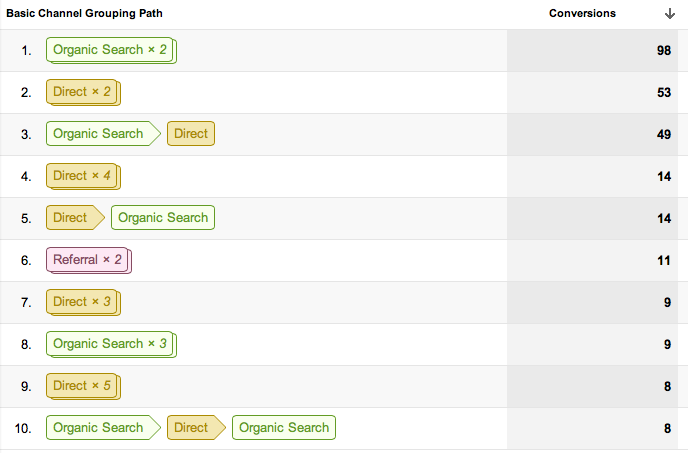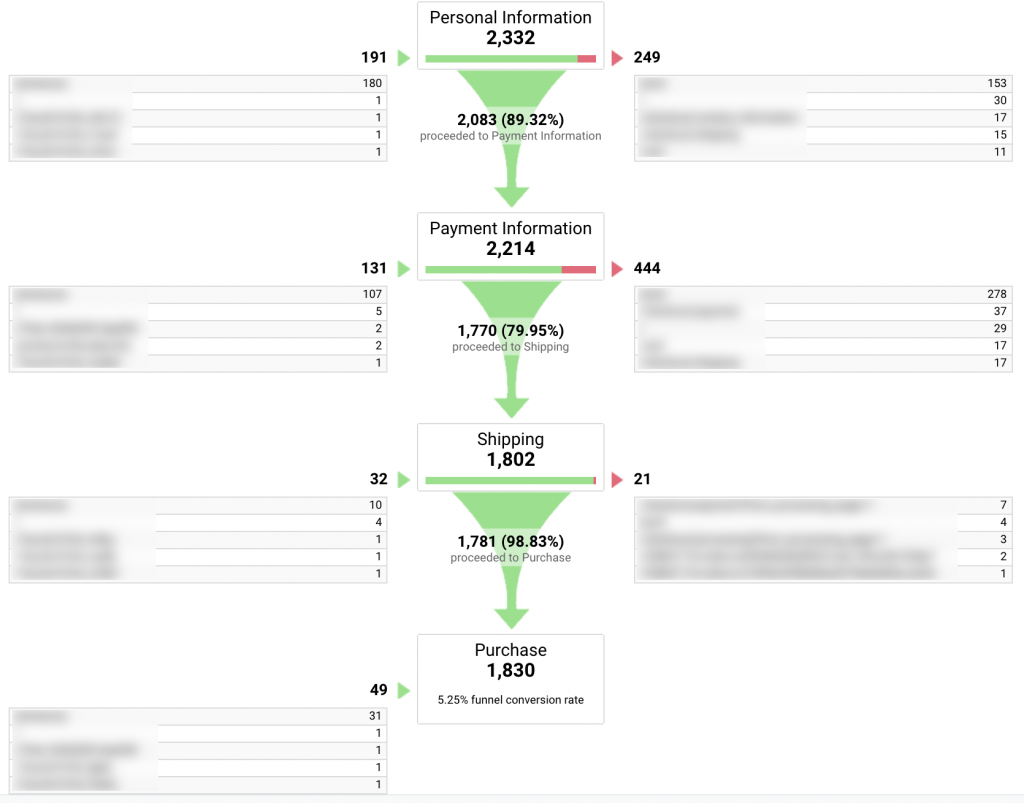What Data Is Google Analytics Goals Unable to Track and Why
What Data Is Google Analytics Goals Unable to Track and Why
Blog Article
Discover the Limitations of Google Analytics Goals: Revealing the Data Types That Remain Untrackable
As organizations increasingly rely on data-driven decision-making, comprehending the limitations of tools like Google Analytics becomes paramount. While Google Analytics Goals deal beneficial insights into user communications, there exist information kinds that avoid tracking, positioning obstacles to an extensive understanding of user behavior.
Insufficient Customer Trip Tracking
Incomplete individual journey tracking within Google Analytics can prevent the capability to properly examine customer actions. When the customer journey is not fully tracked, there are voids in the data that protect against a comprehensive understanding of how individuals connect with a web site. This absence of understanding can cause missed out on chances for optimization and enhancements to the individual experience.
One typical issue with incomplete customer trip monitoring is the lack of ability to see the full course that customers take before completing an objective or leaving the website. Without this details, it is testing to recognize where users might be experiencing obstacles or friction points that prevent them from converting. Additionally, insufficient monitoring can cover the influence of certain advertising initiatives or web site adjustments on user actions.
To resolve this limitation, it is critical to establish appropriate tracking devices within Google Analytics to capture the whole user journey. This may involve establishing up occasion tracking, goal funnels, or using devices like Google Tag Supervisor to ensure that no essential interactions go unrecorded. By gaining a thorough view of the customer journey, internet site owners can make more educated decisions to improve user involvement and drive conversions.
Attribution Obstacles
Browsing through attribution challenges in Google Analytics calls for a thorough understanding of exactly how various touchpoints add to the overall conversion process. Acknowledgment challenges arise from the complexity of modern-day customer trips, where users communicate with numerous networks before transforming. Google Analytics supplies various attribution designs like initial touch, last touch, and linear, each using a different point of view on just how debt is appointed to touchpoints along the conversion path. However, these versions might not constantly accurately show the true impact of each touchpoint on the conversion.
One typical attribution challenge is the problem in associating conversions to the proper source, especially in instances where customers engage with multiple networks before transforming. Furthermore, cross-device tracking postures one more attribution obstacle, as individuals usually switch over between devices throughout their trip, making it challenging to track their communications effortlessly.
Offline Conversions
Given the obstacles connected with attributing conversions properly in online channels, the dimension of offline conversions presents a substantial opportunity for online marketers looking for an extra extensive understanding of their consumers' journey. Offline conversions describe activities that clients absorb the real world, such as making purchases in brick-and-mortar shops or over the phone, participating in events, or these details engaging with published materials - what data is google analytics goals unable to track. These conversions are vital for companies that run both online and offline, as they give valuable insights right into the effectiveness of advertising and marketing campaigns across different touchpoints
Tracking offline conversions commonly posed a considerable difficulty for online marketers, as it was challenging to connect these actions back to certain on-line communications accurately. However, with innovations in technology, such as the integration of CRM systems, distinct identifiers, and discount coupon codes, services can currently link the void in between online and offline information to obtain an extra all natural sight of consumer behavior. By properly gauging offline conversions, marketers can maximize their approaches, allot sources much more efficiently, and ultimately boost the general client experience.
Cross-Device Monitoring
Cross-device monitoring plays a vital function in comprehending the interconnected nature of customers' electronic communications throughout numerous tools. In today's omnichannel world, where individuals effortlessly switch in between tablets, smartphones, and desktops, tracking their behavior across these tools is crucial for marketing experts to acquire a comprehensive sight of their consumer journey.

In addition, personal privacy problems and laws such as GDPR and CCPA have even more complex cross-device tracking. With users demanding even more control over their information and increased restrictions on tracking technologies, marketing professionals have to locate cutting-edge and privacy-compliant means to attach customer communications across devices.
Dynamic Material Interaction
Comprehending customer interaction with vibrant material is crucial in maximizing digital marketing techniques for improved target market interaction. Dynamic content describes internet site aspects that alter based on customer habits, preferences, or various other aspects, providing a personalized experience. Nevertheless, tracking user communications with vibrant content poses obstacles for standard analytics tools like Google Analytics.
While Google Analytics can track fundamental interactions like clicks and web page sights, it may struggle to record more nuanced engagements within vibrant web content. what data is google analytics goals unable to track. Metrics such as time invested in details vibrant elements, float activities, or interactions within pop-ups are frequently not easily quantifiable utilizing basic monitoring approaches. This limitation impedes marketing professionals' ability to completely realize exactly how individuals are engaging with vibrant web content and tailor their strategies appropriately

Verdict
In final thought, Google Analytics objectives have constraints in tracking incomplete customer trips, attributing conversions accurately, capturing offline conversions, tracking cross-device communications, and determining vibrant web content involvement. These constraints highlight the significance of checking out additional tracking methods and devices to gain an extra extensive understanding of user habits and conversions beyond what Google Analytics can give.
While Google Analytics Goals offer important insights right into customer communications, there exist data types that elude monitoring, presenting obstacles to a comprehensive understanding of user actions.Incomplete individual journey tracking within Google Analytics can impede the capacity to accurately analyze individual behavior. When the user journey is not fully tracked, there are gaps in the data that prevent a detailed understanding of exactly how users communicate with an internet site.One usual issue with insufficient user journey monitoring is the lack of ability to see the complete course that customers take in the past completing an objective or leaving the site. By gaining an extensive view of the customer journey, website proprietors can make even more enlightened choices to enhance user involvement and drive conversions.
Report this page